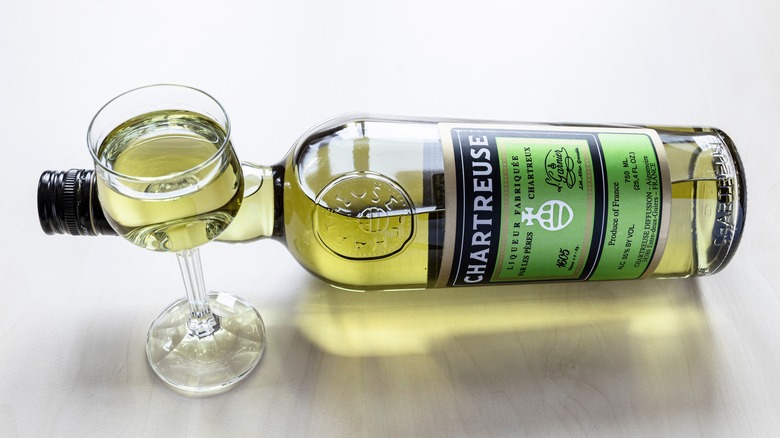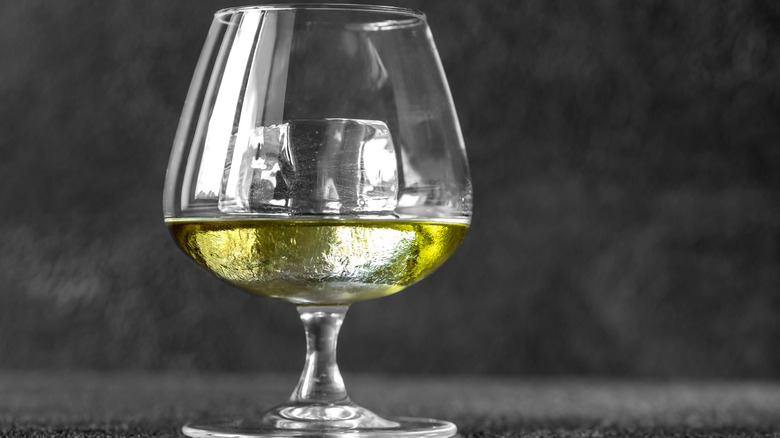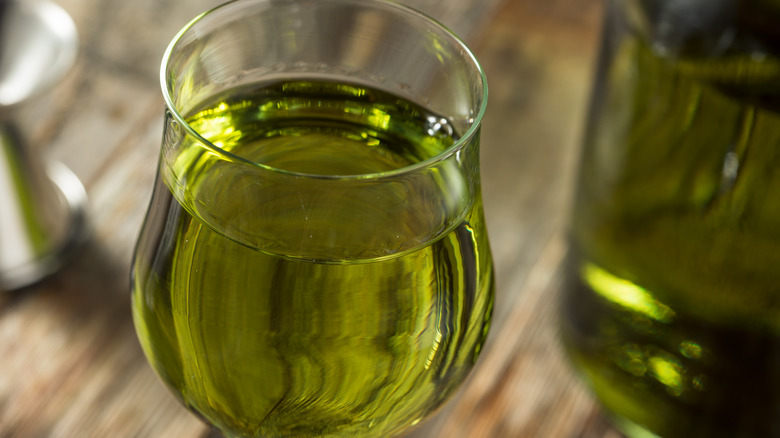What Is Pont And How Is It Different From Chartreuse?
Pont and Chartreuse are popular liqueurs that both come from France. Their botanical flavors and pretty appearance could make them easy to mistake for one another. But, Pont and Chartreuse have very distinct tastes, colors, and origin stories.
Pont came about when a clever French distillery had to find loopholes in a law banning its predecessor, absinthe. The story begins in 18th century Europe when drinking absinthe was all the rage. But, a series of alcohol-induced incidents started a counter movement against absinthe, and France banned the green spirit outright by 1915. That left absinthe distilleries out of luck, suddenly finding themselves without a product to sell.
The supply for absinthe may have stopped, but the demand didn't. People still craved that delightfully botanical flavor of absinthe thanks to its blend of wormwood, green anise, and fennel. To circumvent the new restrictions, absinthe makers George and Armaund Guy at the Distillerie Guy in Pontarlier, France came up with a solution. Back then, people incorrectly blamed a compound in wormwood called thujone for bad behaviors and crime. Distillerie Guy found way to continue production by removing absinthe's illegal ingredient wormwood. The result: Pont — a new twist on absinthe, sans thujone, that they could sell legally.
And so, a new spirit emerged. Pont not only looks pretty, with its snowy hue, it also tastes refreshing, similar to the licorice-like flavor of other anise-based beverages. It has a milky tint with a mint-forward finish, thanks to the green anise in its recipe.
What is Chartreuse?
Unique, versatile, and glowing, Chartreuse liqueur also shares French origins. It comes in two varieties, one yellow and one green. Both come from a centuries-old tradition of spirit-making and use different bases for fermentation.
The green variety uses fermented sugar beet, and its color comes from chlorophyll. It also has a higher alcohol content of 55% ABV (alcohol by volume). Green has a potent woody flavor that tastes more medicinal.
Compare that to yellow Chartreuse. It has a mildly sweet flavor, and notes of honey and saffron makes it slightly floral with a bite of anise. Yellow Chartreuse comes from grapes and gets its color from the addition of saffron. Yellow Chartreuse not only tastes milder than the green, it's also less potent with an ABV of 40%. But, whether yellow or green, both have a shared requirement. They must come from the Aiguenoire distillery in the French Alps.
How is Pont different from Chartreuse?
Although the two liquors are made with very different foundational ingredients — green anise versus sugar beets or grapes — to the untrained palette, Pont and Chartreuse might seem the same. They do share some similarities in their flavor profile, both blending botanical and bitter notes. But, the two French spirits have some notable distinctions.
Pont, a relative newcomer, has a milky tint. Brewed with mountain springwater and green anise, it tastes of light botanical notes and causes a menthol-like cooling sensation similar to spearmint. Unlike ouzo, arak, or sambuca which use star anise, Pont features distilled green anise.
Meanwhile, Chartreuse has earthy, sweet notes, depending on the type. It also has much older origins than Pont, dating back to the early 1600s when it became a beloved beverage among Carthusian monks. It's sipped straight or mixed with drinks, like the Green Hat cocktail.
So, what's the best way to sip Pont? Take it from its brewers at Distillerie Guy, who mix it with their other housemade liquor called Sapin, made from local fir trees. The resulting cocktail, called a Sapont, has a refreshing botanical and licorice flavor that combines the piney Sapin and the snowy Pont.



